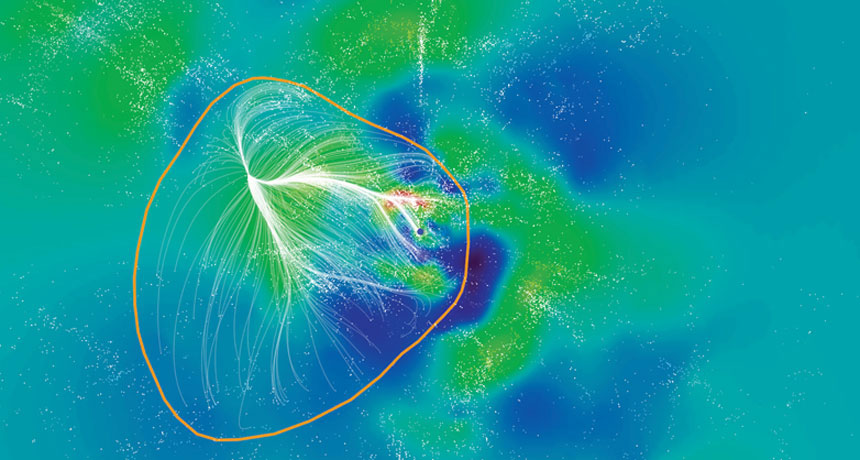Milky Way connected to a vast network of galaxies
Astronomers name home galactic supercluster Laniakea

IN THE NEIGHBORHOOD The Milky Way (blue dot, center) lives in the outskirts of Laniakea (orange), a galactic supercluster 520 million light-years across. Galaxies (white dots) flow along streams (white lines) toward a central point.
D. Pomerède/CEA/Saclay







